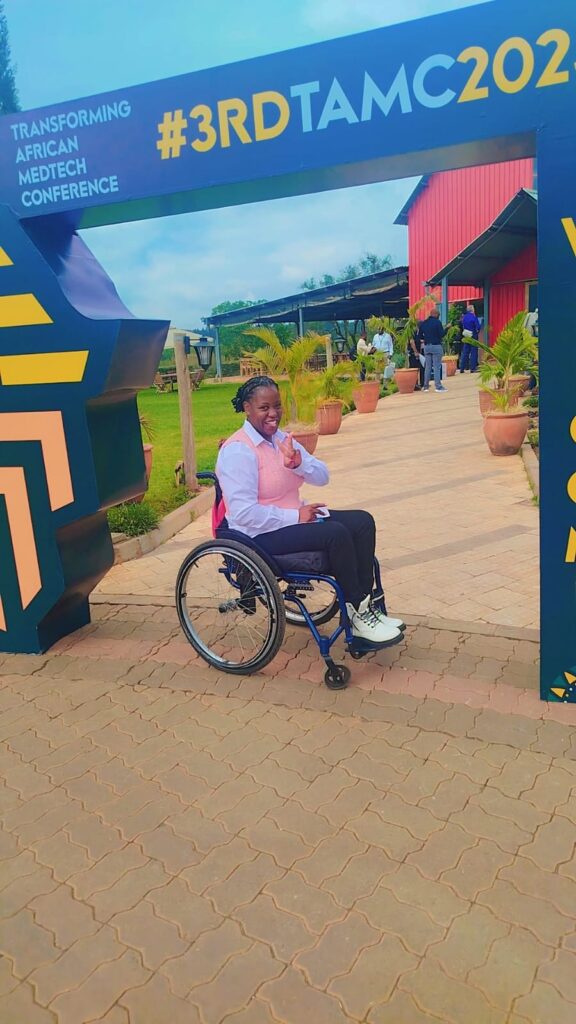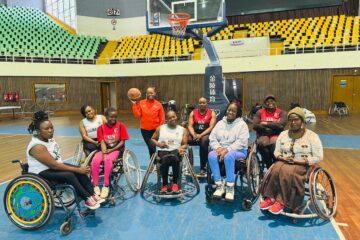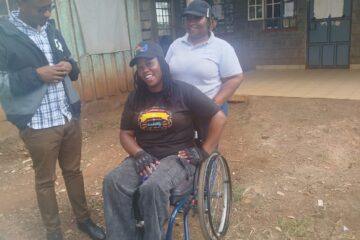Before surgery, I was terrified. The kind of fear that eats at you in silence. I lay there, staring at the ceiling, wondering if this was the end of my life as I knew it. Would I ever walk again? Would my legs carry me out of that hospital bed? Or was this the end of the story I had been writing for myself?
In that bright surgical room, I laid out all my fears. I told the doctors and nurses what was swirling in my heart. I was vulnerable, stripped of every mask, every ounce of pretense. I asked every question that was bothering me – Will I ever walk again? Will my life be the same after this? What do I do if I cannot walk? How will I survive?
And do you know what they did? They didn’t brush it off. They sat. They listened. They held space for me to be afraid. Maybe that was my way of surrendering, or maybe it was the beginning of healing.
And just when I thought that was it, my neurosurgeon leaned in and said words that changed me (Not right away but years later when I was sinking in self pity) He said: “Lucy, life doesn’t end just because you can’t walk again. Promise me you’ll live—whether you walk out of here or roll out of here. Because there is so much to live for”
I promised. I didn’t know if I believed it then, but I promised. And in that theatre, surrounded by masks, gloves, and bright beams of light, I began my journey into a new life.
But then came the real journey, the one after the surgery.
The nurses were my first teachers. They taught me how to turn in bed when my body felt like stone. The second night after surgery, I couldn’t move. My body was foreign, heavy, and uncooperative. A nurse came in, small in frame but mighty in spirit. “Lucy, we need to turn you,” she said gently. I wanted to scream—how? Every nerve felt like it was on fire. But she guided my arm here, tucked my leg there, and rolled me slowly. I cried, not just from pain but from the shame of needing help for something so basic. She didn’t flinch. She whispered, “This is how we keep you safe from sores. You’ll learn. One day you’ll teach someone else.”
They taught me how to manage pain, how to clean myself, how to sit up when every muscle screamed. The same nurse, patient beyond words, would sit with me until every last pill was swallowed. Eight of them. And I hated pills. But she wouldn’t leave. She knew healing needed discipline, even when I resisted.
Then there was the physiotherapist who changed everything. Just two days after surgery, he sat me on a wheelchair for the first time. I cried. The pain was unbearable, the weight of my new reality heavier than my body could carry. But he looked me in the eye and said:
“Embrace the pain. Five minutes today. Tomorrow, ten. Then twenty. Until one day, it won’t hurt anymore.”
That wasn’t just about physical pain. It was about life. About resilience. About learning to take in the unbearable, one minute at a time, until you find your strength again.
I remember the same neurosurgeon noticed my panic whenever my back ached. I thought it meant disaster, that my body was failing again. He sat beside me and explained: sometimes, it’s just tension. Sometimes, your body just needs a massage. He gave me the gift of peace—the ability to separate fear from fact.
Dr. Wanyoike turned my recovery into lessons. He explained every detail of how my body had changed: why my bladder worked differently, why I needed new routines, why certain foods mattered. He didn’t sugarcoat it, but he gave me power through knowledge. Suddenly, I wasn’t helpless. I was informed.
But he didn’t stop at the medical. He planted seeds for the life I hadn’t yet imagined. He told me that I could work from anywhere, that my wheelchair didn’t have to confine me — my mind could still travel the world. He spoke of learning new skills, of trying things that once felt out of reach. He even threw ideas of politics into my head, of starting my own business, of becoming a voice in rooms that often forgot people like me.
One afternoon, he handed me a diary and told me to document everything — the pain, the victories, the confusion, the tiniest progress. Page by page, he showed me how to see normalcy again, how to piece together a new kind of life. He guided me when I was lost, reminded me that purpose doesn’t die with paralysis. If anything, mine had just been uncovered.
The same physiotherapist taught me how to transfer from my bed to my wheelchair. It seemed impossible at first, like my body had betrayed me, like gravity was mocking me. But step by step, move by move, he showed me that independence was possible.
These people, these beautiful souls, shaped my journey. They weren’t just healthcare professionals. They were builders. Builders of resilience, of confidence, of a new life. They made me believe that my story didn’t end on that surgical table. They gave me tools, not pity. Strength, not sympathy.
Looking back now, I realize that my journey as a paraplegic wasn’t just shaped by my determination—it was shaped by them. By their patience, their tough love, their wisdom, and their refusal to let me give up.

spinal cord injury recovery
As we mark Spinal Cord Injury Awareness Month, I celebrate not just myself and other survivors, but also the nurses, doctors, and physiotherapists who walk alongside us. Because sometimes healing doesn’t come from the medicine alone—it comes from the humanity of those who care for us.
They reminded me: life doesn’t end here.
And because of them, I’m still living that promise.



0 Comments